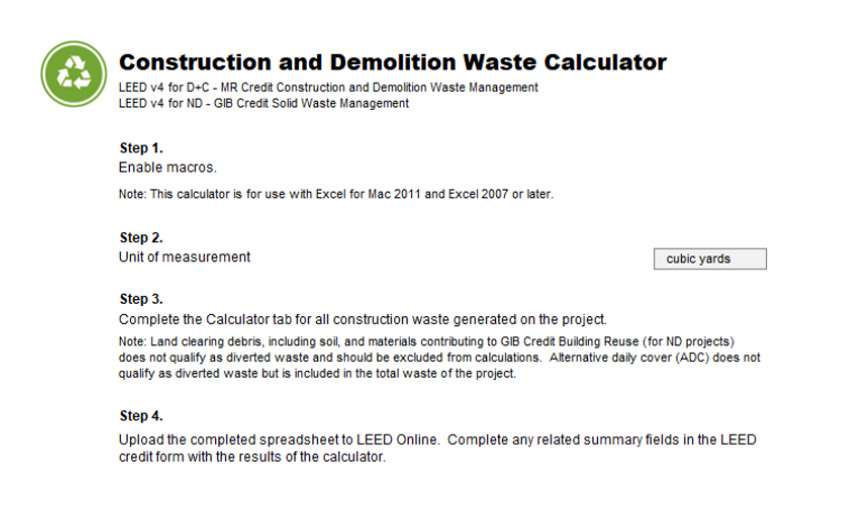Pursuing a Circular Economy
Greenhouse Gas Emissions Lead to Consequences of Climate Change
While a temperature increase of 1–2 degrees Fahrenheit may not seem significant on a given day, over time an increase in the earth’s overall temperature could result in catastrophic changes, including more frequent and intense storms, flooding of low-lying areas such beaches and marshes, more precipitation in some areas and droughts in other areas, wider fluctuations in temperatures, and wider distribution of certain diseases.
Earth's atmosphere supports a balanced variety of climates and ecosystems that depend on those climates. Significant changes could damage communities and national economies as well as alter the natural world.
Because greenhouse gases remain in the atmosphere a long time, reversing the effects of climate change could take decades or, in some cases, centuries.
How the Building Industry Can Reduce Greenhouse Gases
A key way the construction industry can help reduce greenhouse gas emissions is through waste prevention and reduction. We have discussed ways that the building industry can design higher-quality materials with longer lifespans, manufacture materials in a way that they can easily be deconstructed for reuse, and recycle materials so that they can be made into new products, using fewer resources than materials created from raw products. Following are some ways that these practices can help positively impact the environment and reduce a company’s and a building’s carbon footprint.
Reduce Emissions from Energy Consumption
Making goods from recycled materials tends to require less energy than making goods from virgin materials and also makes waste prevention even more effective. Using recycled materials means that less energy is needed to extract, transport, and process raw materials. Ultimately, the lowered energy demand leads to fewer fossil fuels being burned and less carbon dioxide emitted into the atmosphere.
Reduce Emissions from Incinerator and Landfills
By recycling or reusing products instead of incinerating them, fewer greenhouse gasses are emitted into the atmosphere. When materials are diverted from landfills, there is also a reduction in methane gas that is produced when materials decompose.
Protect Forests to Increase Storage of Carbon in Trees
Carbon sequestration is a process in which carbon dioxide is stored in trees. Forests can take large amounts of carbon dioxide out of the atmosphere and store it in wood. Waste prevention and recycling of paper products can leave more trees standing in the forest, continuing to absorb carbon dioxide from the atmosphere. Reuse of deconstructed timbers and wood beams can also help reduce the number of trees cut for construction.
Certifications, Initiatives, and Tools
Selecting the right products and ensuring the best performance can be overwhelming, especially as new materials are developed and new policy initiatives are rolled out. Fortunately, there are many resources for consumers and specifiers alike to help navigate all the options, initiatives, and certifications. There are also tools available that can provide automatic calculations of projected cost savings by product selection.
We will discuss LEED certifications, recommendations set forth by the Carbon Leadership Forum, and free tools available online.
LEED Certifications
Leadership in Energy and Environmental Design (LEED) is a green building certification program and is the most widely used green building rating system in the world. Its mission is to transform how buildings are designed, constructed, and operated.
LEED v4 includes information and resources for construction and demolition waste management planning. The intent is to reduce the waste caused by construction and demolition from entering landfills or incineration facilities, instead diverting them to recycling facilities or new jobs where the materials can be reused. In addition to referring to materials being used on the job site, it also tracks the disposal of all packing materials that come with the building materials.
LEED credits can be earned for construction waste management and waste diversion. To earn credits, a plan is required, and certain percentages of waste reduction must be met. A project can earn up to 2 points for waste management (total waste less than 2.5 pounds per square foot) and 1 extra point for 95 percent diversion.
When creating the plan, some things to consider are development and implementation, goals (for example, keeping five materials out of the landfill), specifying whether materials are comingled or source separated, determining where materials will be taken, determining how materials will be handled, etc.
Other requirements in LEEDv4 are as follows:
- MR Credit 1.1: Divert at least 50 percent of construction, demolition, and land-clearing waste from landfill and incineration disposal (1 point).
- MR Credit 1.2: Divert at least 75 percent of construction, demolition, and land-clearing waste from landfill and incineration disposal (1 additional point).
Calculations can be done by weight or by volume, but they must be consistent throughout. The minimum percentage of debris to be recycled or salvaged for each point threshold is show in the LEED Construction and Demolition Calculator available on the LEED website.

Image courtesy of LEED
The LEED Construction and Demolition Waste Calculator is free and available for use online.
The Carbon Leadership Forum
The Carbon Leadership Forum is based out of the University of Washington and is accelerating transformation of the building industry to radically reduce and ultimately eliminate the embodied carbon in building materials and construction. The forum works to inspire cross-sector collaboration and spur collective action toward net-zero embodied carbon in buildings and infrastructure.
The group is made up of architects, engineers, contractors, material suppliers, building owners, and policymakers who want to provide a better future and make a great collective impact. Together they provide research and resources and help incubate member-led initiatives around their shared goals.
One of the tools created and provided by the Carbon Leadership Forum is the EC3 tool.










